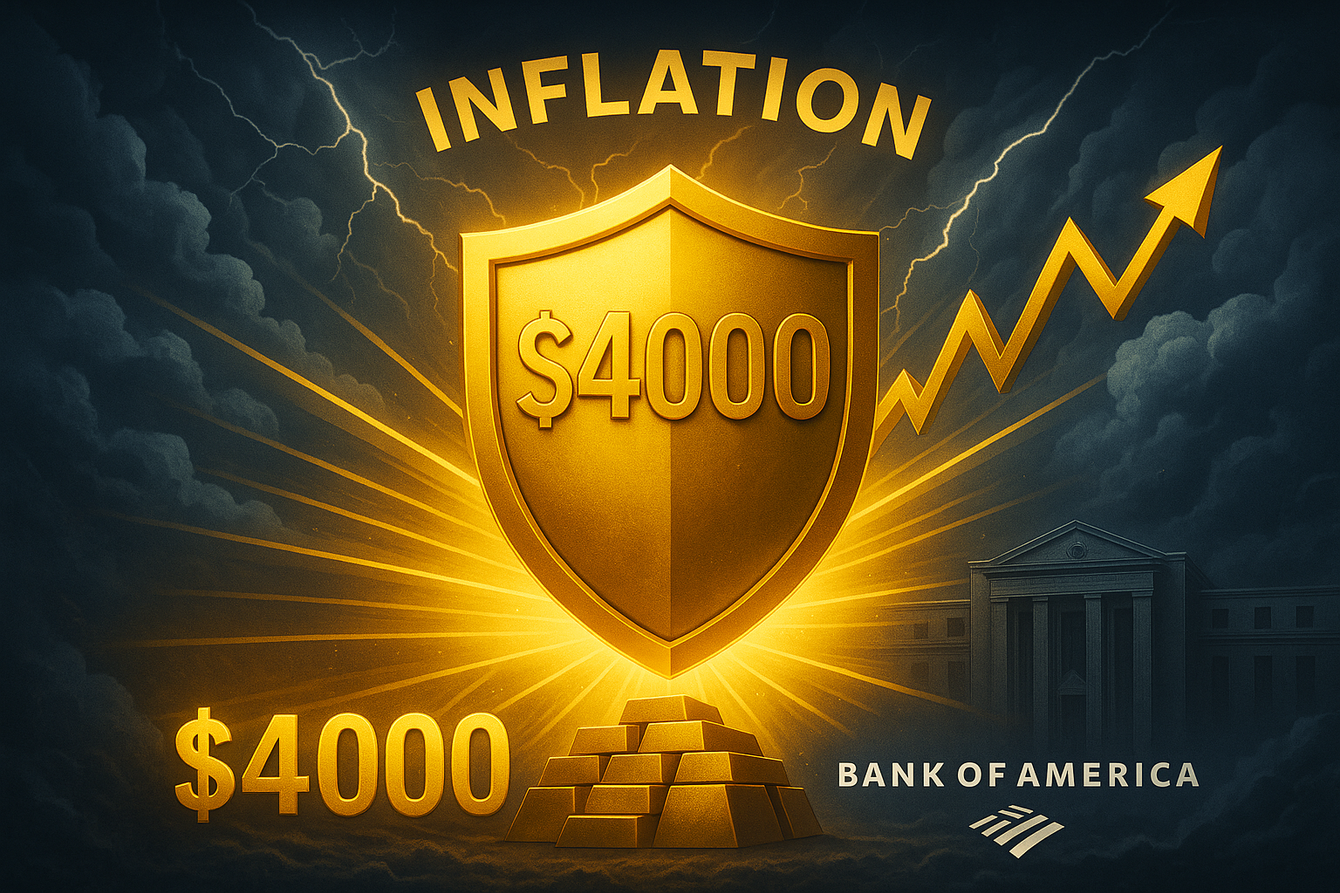Gold always rallies when the Fed cuts rates in a stubborn inflationary environment – Bank of America

(Kitco News) – Even with some selling pressure, the gold market has managed to stand its ground, with prices remaining near recent all-time highs and within striking distance of $3,700 an ounce. The question many investors are now asking is: how much further can this run go?
According to the latest commentary from Bank of America, gold remains on pace to reach $4,000 by the second quarter of 2026. While gold may appear overstretched in the near term, BoA believes the market remains well supported as the Federal Reserve looks to ease interest rates amid elevated inflation pressures.
“The Fed usually takes a balanced approach to its dual policy goal of full employment and price stability. Hence, from a gold perspective, prioritisation of the labour market over inflation matters,” said Bank of America’s precious metals team led by Michael Widmer. “Since 2001, gold has pushed higher every time the Fed has cut rates when US CPI is above 2%.”
Specifically, Bank of America noted that gold prices have seen average gains of around 13% within 12 months after the Federal Reserve has cut interest rates in a stubborn inflationary environment. However, that looks like a fairly muted response, as gold prices are up nearly 40% so far this year.
At the same time, Widmer’s team noted that short-term U.S. monetary policy is not the only thing supporting gold prices and driving them higher. He explained that gold is also attracting a robust safe-haven bid as investors react to concerns about challenging fiscal outlooks and rising debt burdens around the world.
“The yellow metal has been correlated with 30-year nominal rates, hitting an all-time high as Treasury benchmarks have rallied towards 5%,” the analysts said.
Bank of America also sees growing weakness in the U.S. dollar – as nations start to question its role as the world’s reserve currency – as further support for the precious metal.
“Heavily influenced by this macroeconomic backdrop, central banks keep increasing their exposure to gold,” the analysts said. “Monetary authorities now own more gold than Treasuries, although their pace of gold purchases has slowed down relative to last year.”